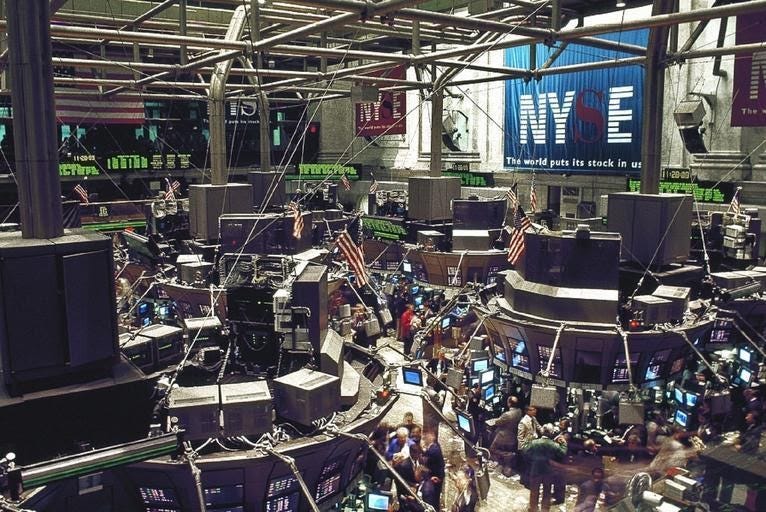Markets squeal from runaway feedback loops
Why are we seeing so many contradictions escalating at once?

Thank you for reading Contention! This one should take just about five minutes to read. If you like it, please follow us on Twitter and share it with others who’ll like it too!
If you’ve been reading us for a while now or if you’ve dug through our archives, you might have seen one term popping up a lot lately: feedback loops. Feedback loops are a common natural phenomenon, but understanding how and why we are seeing so many of them right now can help us decipher and navigate market news and chaos.
A feedback loop occurs when the outputs of any system become inputs into that same system. Positive feedback loops are like a microphone too close to its speakers. The mic picks up the amplified sound, amplifying it further, which the mic picks up again. This is why it squeals, and if you don’t move it, the speakers could blow.
Positive feedback loops destabilize their systems, and these are the kinds of loops we keep seeing in the news.
Two intersecting feedback loops caused the meme stock runup in January.
A short squeeze: sharp rises in heavily shorted stocks forced major investors to “cover” their positions, further driving up the price, forcing more shorts to cover.
A gamma squeeze: rising prices made banks and market makers buy stock to hedge call options they’d issued, bidding the price up more, leading to more hedging.
In GameStop’s case, r/WallStreetBets coordinated the buying of shares and call options, raising stock prices, squeezing gamma, causing a positive feedback loop that forced the short squeeze, another feedback loop. That’s how you end up with a 1,700% price increase in a matter of weeks.
The story roiling markets now: rising interest rates, fueled by a feedback loop known as “convexity hedging.”
Bond prices move in the opposite direction to yields, and the greater the bond’s duration, the more its price changes as interest rates rise and fall. Mortgage-backed securities (MBS) are supposed to be low-volatility investments, but when interest rates drop, homeowners refinance their mortgages, shortening the overall duration of the MBS. Security investors hedge this by buying 30-year Treasury bonds to make up for the lost duration.
When rates go up, on the other hand, they need to shorten their duration, so they sell the bonds. This selloff only accelerates bond price declines, which raises rates. The MBS holders sell off more bonds in response, hence the feedback loop. This led to “convexity events” and sharp interest rate increases in 1994 and 2003.
This is less likely now: the Fed has purchased $2.18 trillion in MBS since the Great Financial Crisis, and it doesn’t do this hedging. But some analysts believe rates are nearing a threshold when private MBS hedging might create a significant selloff in bonds, accelerating rate increases.
This could then trigger a nascent feedback loop threat in equity markets. Higher interest rates mean you need less money today to return the same amount of money later: future earnings are worth less now. This weighs heavily on “growth” stocks like big tech companies -- their price is based on expected long-term profits. These stocks have struggled over the last two weeks.
The big problem: margin debt is at its highest level ever, and it is growing faster than ever before. Any significant decline in prices will mean margin calls, lenders demanding collateral. Debtors will have to sell other assets to meet those calls, further driving down prices, creating new margin calls. This could precipitate a rapid decline in stock prices.
So why are all of these loops happening at the same time? The fact is that all phenomena in the universe contain internal contradictions with inputs and outputs constantly feeding into one another, sustaining and changing everything around us. When certain large-scale contradictions reach high levels of escalation, the amplified consequences cascade through all of the contradictions animating that system.
We’ve already identified the most important contradiction of all in our economy today: short-term profit-seeking by individual businesses undermining the long-term profitability of the economy overall. The middle 40% of businesses have seen declining growth in profits every decade since the 1970s, with a 47% loss in annual profits in the last decade alone. Return on equity, return on assets, and earnings-to-price ratios for them are all negative now.
Large companies have performed better, but only because of rents collected on intellectual property and monopoly consolidation. That money is coming off the bottom line of smaller businesses and working families.
As this contradiction escalates, investors desperate for returns turn to speculation, and their highest leaders intervene in the market to manipulate capital price signals, making capital returns even harder to come by and speculation more attractive. And look at that: another feedback loop, yet again unfolding before our very eyes.
It’s impossible to time or precisely predict the outcomes but one theme is clear: chaos and instability will only increase for the months and likely years to come.
Disclaimer
Our only investment advice: Short Shaq, long Candace.
Contact us with questions, thoughts, feedback, or stories we missed.



